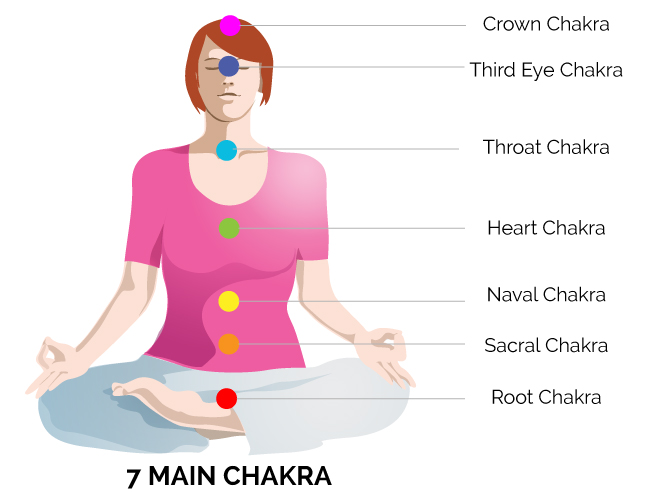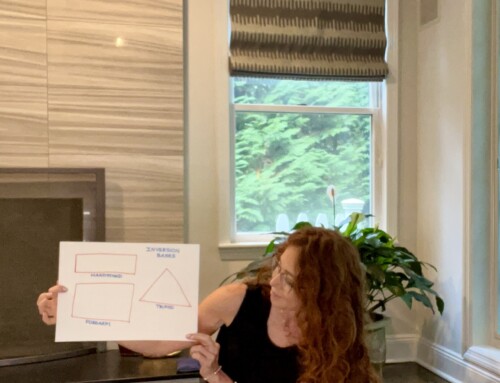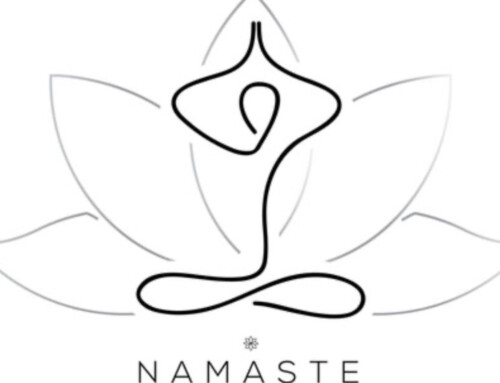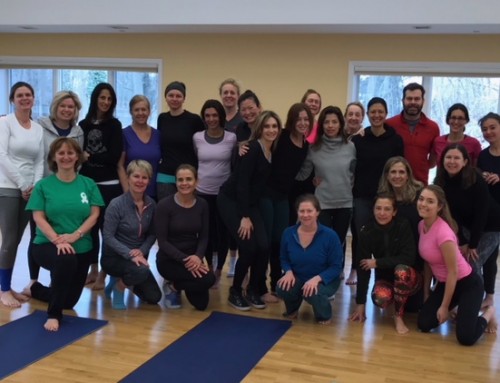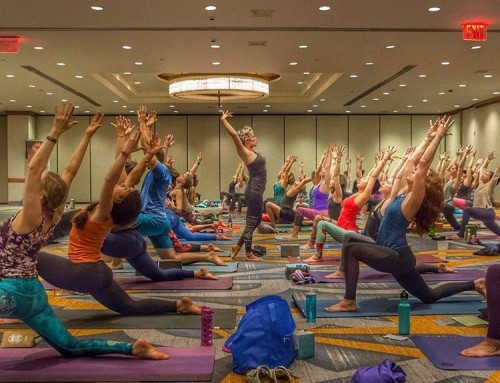“Chakras are organizing centers for the reception, assimilation and transmission of life energies”.
Anodea Judith
The word chakra means “wheel”. (There are well over one hundred chakras in the body, here we will focus on the main seven). Working with the chakras is a way to locate consciousness in our body. Each one has a different role and energy associated with it, both physical and mental. Below is a very simplified overview.

Root chakra – This chakra is located at the base of our spine and is associated with our most basic need, the need for survival. If we continually have issues with our home life, our job or our security in general, it can often be traced back to an imbalance in this chakra, which leads to feeling fear. The element that is linked to our root chakra is earth. In order to be balanced in this chakra we need to feel grounded. We literally need to feel the earth steadily beneath our feet in order to feel its stable support. We can use our yoga practice to help balance this chakra by working in standing postures and focusing on our connection to the ground.

Sacral Chakra – The location of this chakra is in our pelvis. The element is water. This chakra relates to how we flow with life, what we are attracted to and what we push away from us. It is also linked to our creativity and sexuality. When our second chakra is overactive we are volatile and ruled by our desire to seek pleasure (through food, sex, material things, status). This chakra is related to the moon and the more feminine aspects of ourselves. Focusing on hip opening and a general vinyasa (moving with the breath) flow practice would be excellent ways to bring attention and balance to this chakra.

Naval Chakra – We continue upward with our third chakra which is located in the area of our solar plexus. Physically our core which also houses our own personal power. It governs digestion and connects to the idea of transformation. The element is fire. If we are excessive in this area we may be too focused on power or status. Conversely if we are weak in this area we may appear like a victim or have a low opinion of ourselves. To balance out our third chakra, we can use our yoga practice in a way that emphasizes our core, such as in boat pose (navasana) as well as practicing sun salutations and warrior poses.

Heart Chakra – A balanced heart chakra allows us to be able to both give and receive love. Its element is air. (Notice how the elements get lighter, less dense as we move away from the base of the spine). This chakra is where we begin to transition from the gross to the subtle. Practicing heart opening back bends, pranayama (breath work) and cultivating gratitude in general is how we focus on our heart chakra.

Throat Chakra – This fifth chakra centers on our ability to communicate our own personal truth with the world. It also concerns itself with how well we listen. It’s elements is ether (or space). Sound (vibration) in general is linked with this chakra including chanting, singing or reading out loud. Too much in this chakra could look like excessive talking or not listening. Too little, fear of speaking, neck stiffness or under active thyroid. Yoga poses to balance this chakra include shoulderstand and plow pose.

Third Eye Chakra – This is our seat of intuition. It’s element is light. The location is between our eyes, about an inch higher and an inch deep within our skull. Our ability to see and to understand resides in our sixth chakra. It sees beyond the physical world. This chakra is either open or closed (we don’t think of it as in balance). Mediation is one way we can tap into our sixth sense.

Crown Chakra – The seventh chakra is where we receive both knowledge and understanding. Physically it relates to our higher brain. Energetically it relates to unity and our connection to others and is sometimes referred to as the seat of the soul.


